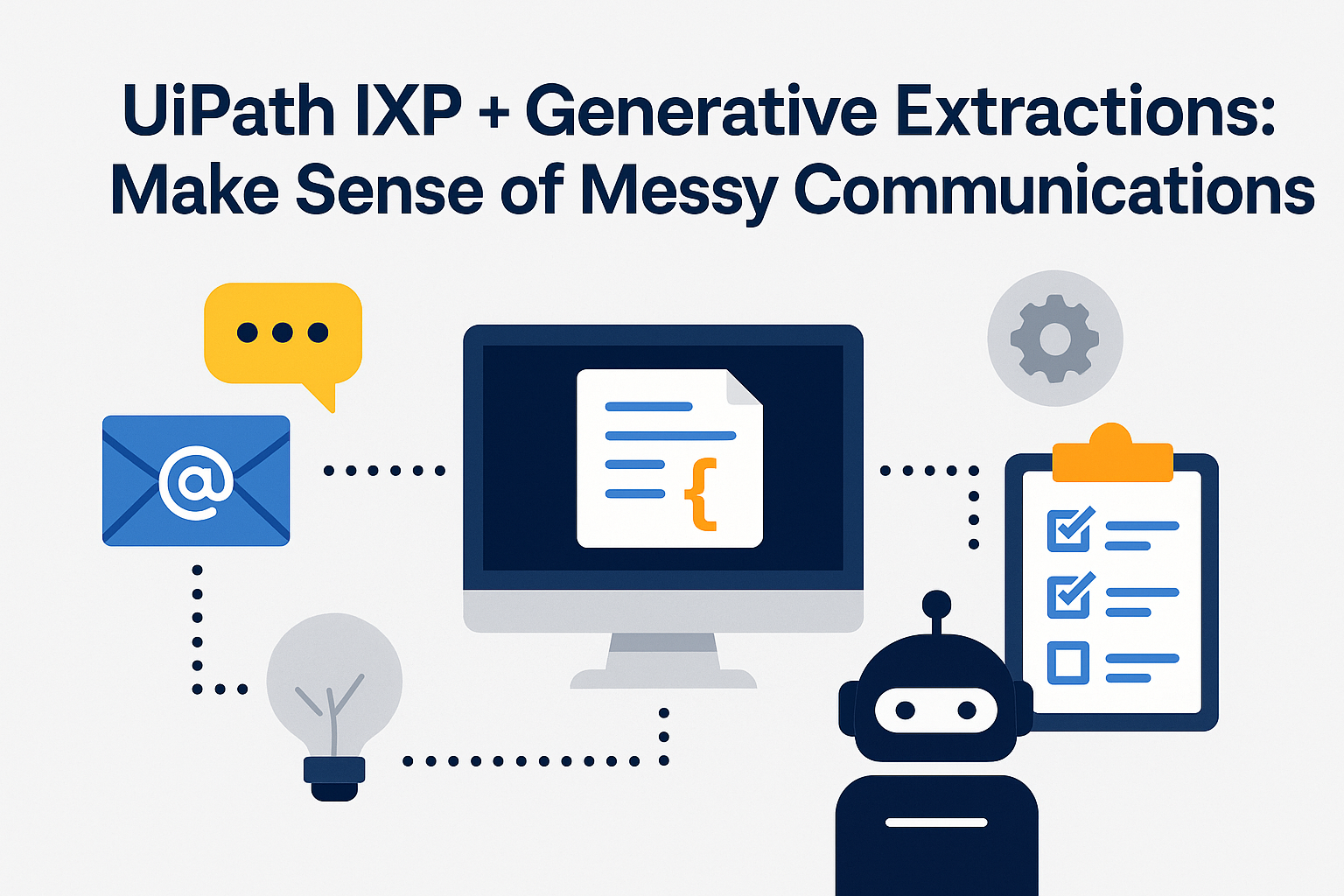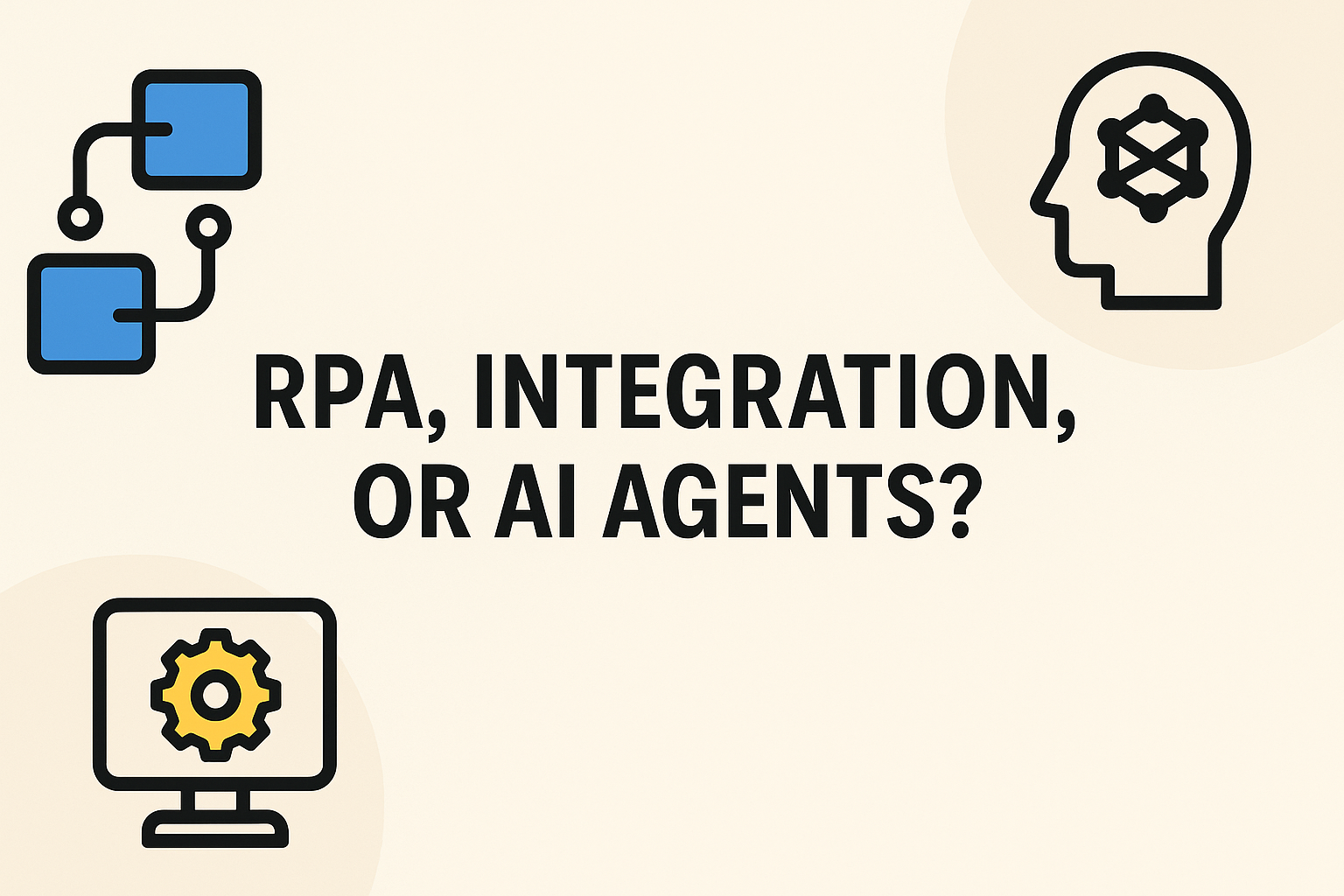The future is automated—and still human. Keep people at the center and you’ll actually get somewhere.
Phase 1 (Weeks 1–3): Frame & baseline
- Pick one process; write outcome in one line (metric).
Define the win in plain numbers (e.g., “Auto-triage 60% of tickets in ≤6h with <5% rework”). Done when the sentence fits on one line and a CFO would nod. - Map reality (AS‑IS, exceptions, inputs).
One-page flow of what actually happens today, with decision points, exception list, and sample inputs. Done when SMEs say “that’s it,” not “it depends.” - Baseline current cost/time/error with 10 real cases.
Time a small, honest sample and capture cycle time, error rate, touches, and effort. Done when you have a table you can compare against later.
Phase 2 (Weeks 4–7): Build the thin slice
- IXP/DU to extract; Agent to decide; RPA/API to execute.
Wire a vertical slice: unstructured → structured → decision → action. Done when one golden-path case runs end-to-end without human help. - Confidence threshold + escalation path defined.
Set a numeric floor (e.g., 0.80) and the exact route for low-confidence or policy hits (queue, owner, SLA). Done when the agent can tell you why it escalated and to whom. - Telemetry wired: logs, costs, reasons.
Emit event logs with case IDs, latency, confidence, result, and estimated cost-per-case. Done when you can open one dashboard and answer “what happened, how fast, how much.”
Phase 3 (Weeks 8–10): Hardening & proof
- Exception drills (timeouts, bad inputs, policy blocks).
Break it on purpose and verify retries, fallbacks, alerts, and audit trails. Done when each failure mode produces the expected behavior and a readable log. - Shadow run → limited prod window → daily report.
Run in parallel with humans, then a controlled prod slot; publish a daily snapshot of volume, success %, escalations, and incidents. Done when humans trust the numbers. - Publish deltas and the ‘stop/scale’ recommendation.
Compare to baseline (time/cost/quality), list risks left, and state the call. Done when you can show a 1-pager that says “stop, fix, or scale,” with math—not vibes.
If you can’t explain the result to a CFO and a security lead in five minutes, it’s not ready. Simple beats clever.
Deliverables by week
| Week | Deliverable |
|---|---|
| 1 | One-line outcome, AS-IS map |
| 2 | Data sample pack (10 real cases) |
| 3 | Risk register + SLO draft |
| 4 | Thin slice model in Studio Web |
| 5 | IXP extraction baseline |
| 6 | Agent decision loop + guardrails |
| 7 | API actions wired via Integration Service |
| 8 | Exception drills + logging review |
| 9 | Shadow run, daily report |
| 10 | Limited prod window |
| 11 | Publish deltas + stop/scale memo |
| 12–13 | Hardening, handover, and doc set |
Risks & mitigations
- SME time collapses → book a 30-min weekly clinic w/ a named deputy; send a 1-page pre-read 24h before; escalate to sponsor after 2 missed reviews.
- No test data → build a small synthetic set plus a redaction pipeline; include 10 real edge cases; get security sign-off before UAT.
- Cost spikes → cap cost-per-case with alerts at +20% WoW; switch models/tools or downshift to rules where possible; review spend in the weekly ops check.
👉 For full templates, scorecards, and slide-ready checklists, see Digital Automation Guide and the companion course. Join the waitlist.
Further reading
- UiPath Agent Builder overview: https://www.uipath.com/product/agent-builder
- UiPath Agents (release notes): https://docs.uipath.com/agents/automation-cloud/latest/release-notes/may-2025
- Studio Web (agentic processes, 2025): https://docs.uipath.com/studio-web/automation-cloud/latest/user-guide
- UiPath IXP & Communications Mining: https://docs.uipath.com/ixp/automation-cloud/latest
- UiPath Integration Service: https://www.uipath.com/resources/automation-demo/introducing-integration-service
- UiPath Autopilot: https://www.uipath.com/product/autopilot




